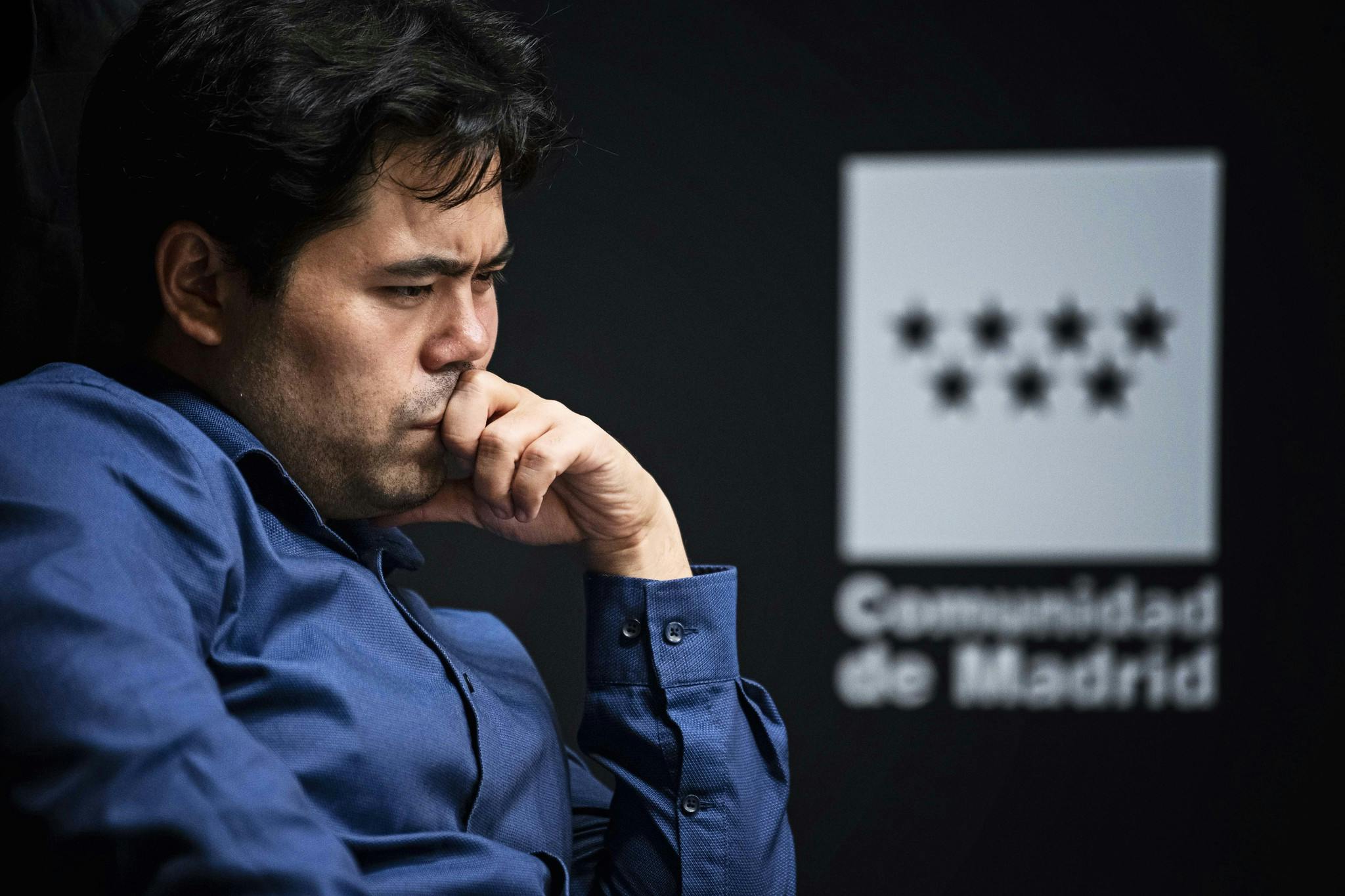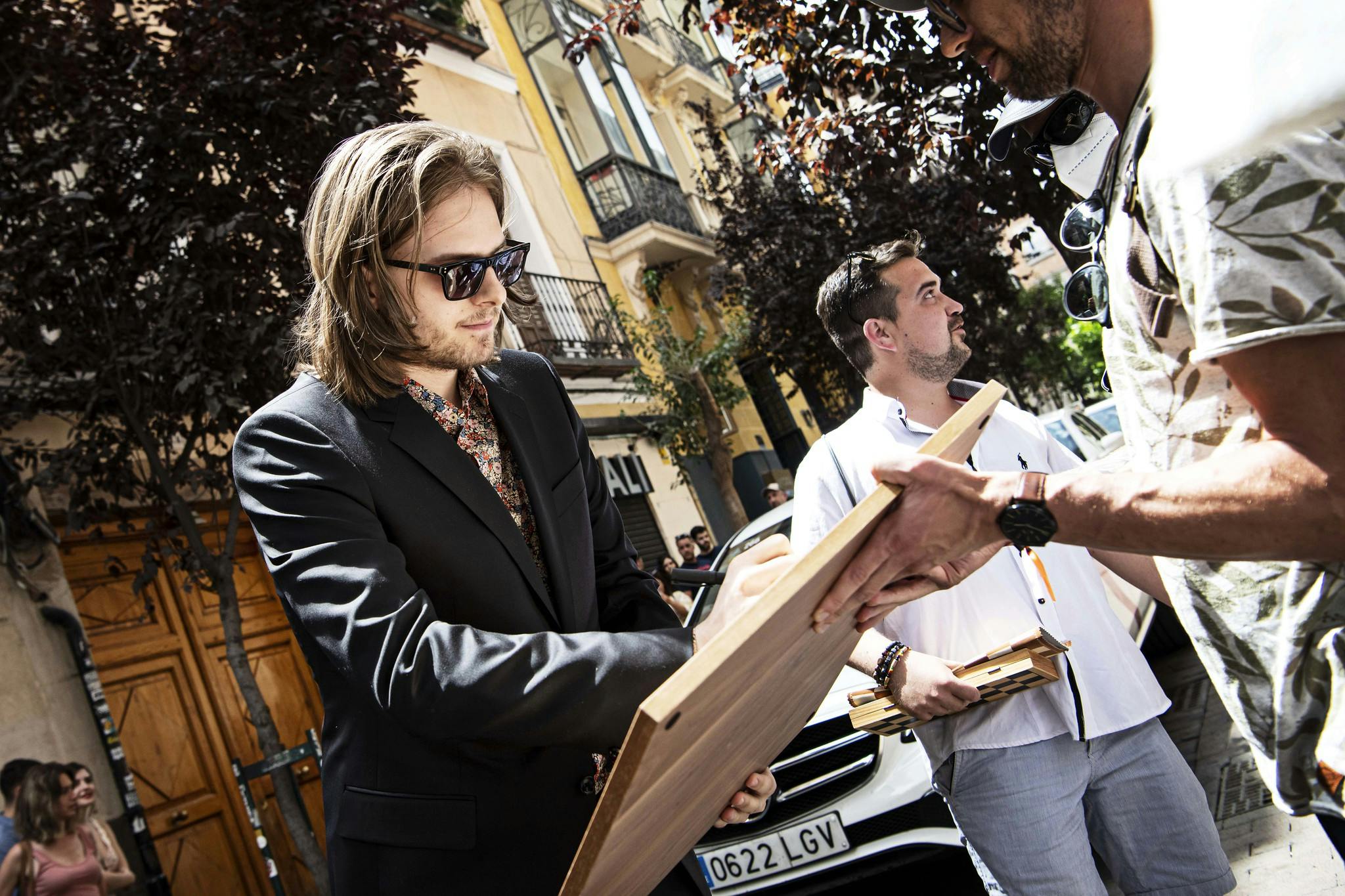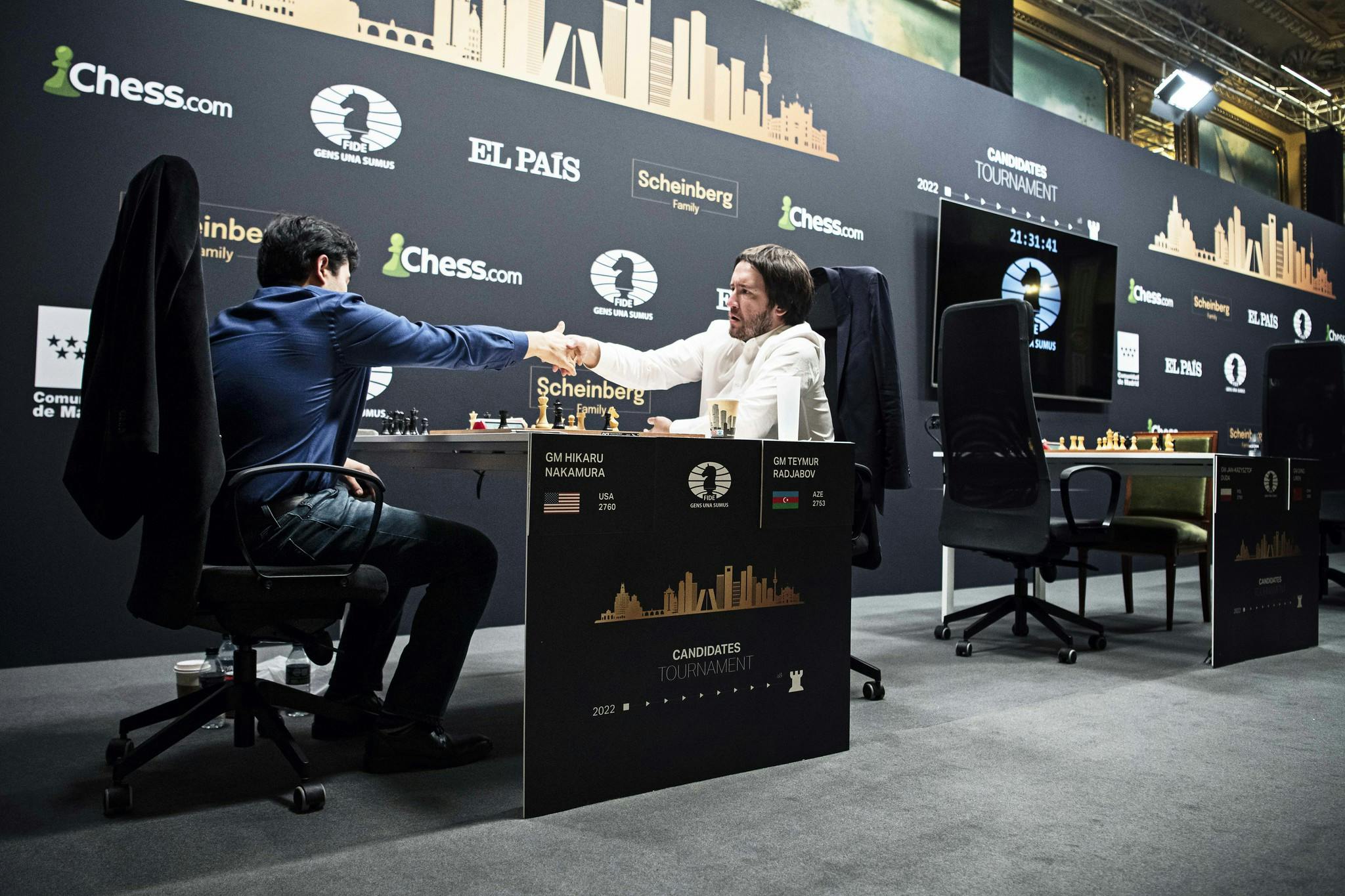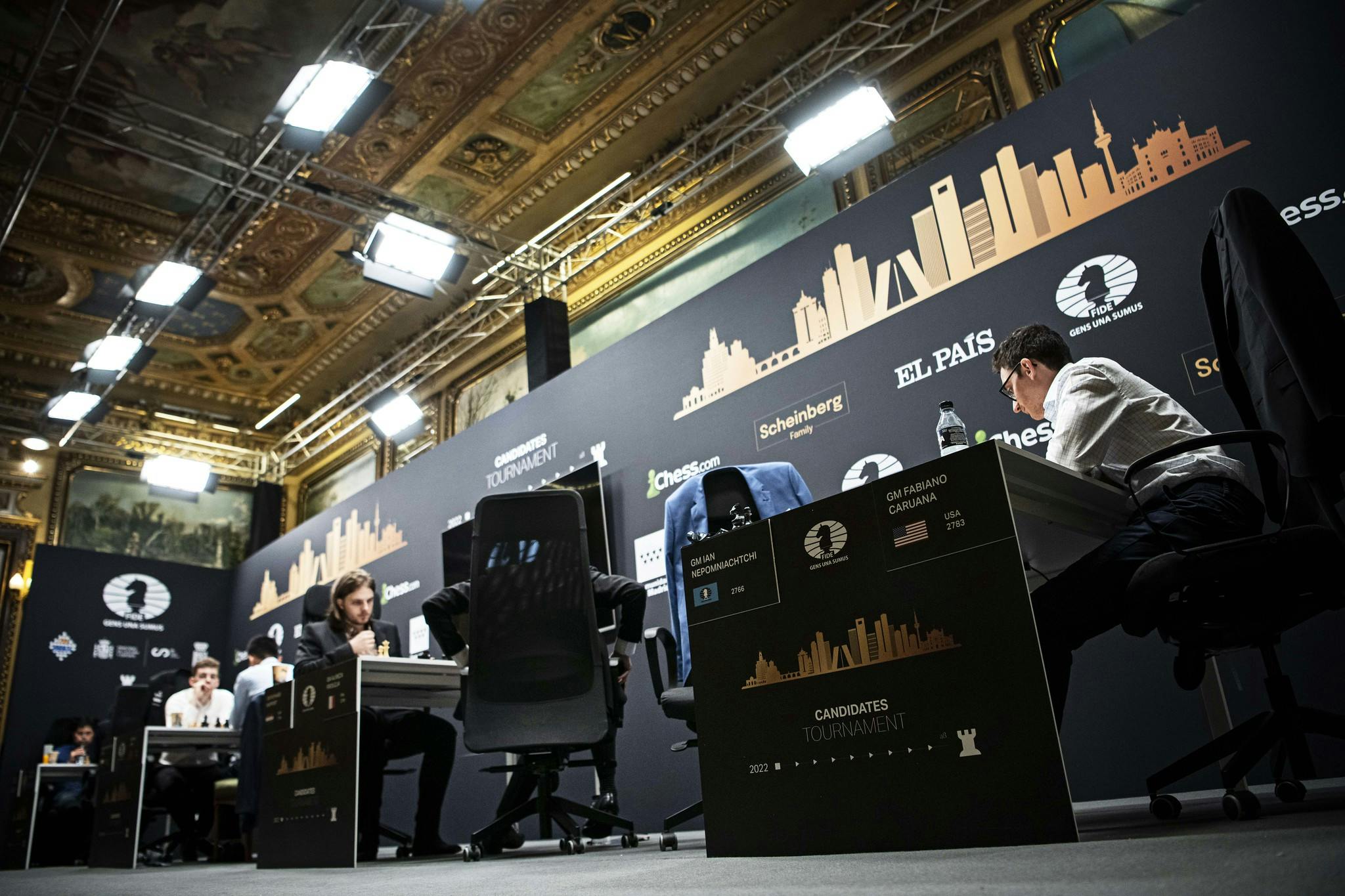Candidates Day Two: For whom the Berlin tolls

The second day of the Candidates Tournament in Madrid has concluded with a slightly topsy-turvy day.
PHOTO: Stev Bonhage / FIDE
Daily, Lichess is providing a broadcast of the games played in real-time. We also have a selection of annotated games by GM Nijat Abasov and video recaps by WGM-elect Jesse February, further below.
Game One: Rapport v Firouzja: ½ - ½
Many expected a game between two players well-known for their pushing style to be double-edged and sharp. The players opted for a lesser known line of the Sicilian Defense, and traded off queens by move 12, in what looked like quite a dry and equal position, a far cry from the sharp double-edged games many expected. The game appeared to be heading to a relatively quiet draw until Firouzja appeared to blunder with 31… Ra1, allowing Rapport to double up his rooks on the 7th file, “hungry pigs” who can eat all of the pawns Firouzja left on that file. Whilst Stockfish loved Rapport’s chances here with +3.5 in favour of him, closer analysis showed it required quite a deep and accurate level of play from Rapport to fully capitalise. Still, with more time on his clock than Firouzja, Rapport didn't need to rush and possibly could have found a better continuation than he did. Firouzja defended tenaciously and combined with some inaccurate play by Rapport, both players agreed to a draw on move 60.
https://lichess.org/study/embed/sylFQGas/Rp1EnHT1

Rapport or Brad Pitt? PHOTO: Stev Bonhage / FIDE
Game Two: Nakamura v Radjabov: 1 - 0
Nakamura was at the wrong end of a Berlin Defense yesterday, but was at the right end of another Berlin Defense today. Is the era of the Berlin Defense being known as a reliable drawing tool over? Walking down lines well explored, Nakamura was the first to diverge from established paths. Radjabov was up for the challenge, and in fairness the game looked drawn until Radjabov, in time trouble before additional time control, made a series of suboptimal moves. The pressure, however, was still on Nakamura to find winning combinations, not an easy task and it looked at several points like Radjabov was off the hook. But, after continuing pressing play from Nakamura and weakened defenses by Radjabov, the latter resigned in a lost position at move 75.
https://lichess.org/study/embed/450dtcgH/EtQGN0lv

PHOTO: Stev Bonhage / FIDE
Game Three: Nepomniachtchi v Caruana: ½ - ½
The two previous winners of the Candidates Tournament (2018 for Caruana, 2020-21 for Nepomniachtchi), and the previous day's winners had their first clash. Things began with perhaps the most mainline theory we’ve seen in the tournament so far, the very well-traveled Italian Game Giuoco Pianissimo. Caruana was the first to diverge playing 10… Ng4 instead of the usual 10… Nh7. A novelty, Caruana shared later he knew it was slightly losing to play, but hoped it would surprise Nepomniachtchi. Nepomniachtchi found the best natural play against it, and whilst Stockfish liked Caruana’s position slightly more than Nepomniachtchi’s, for humans it was difficult to tell how to proceed and the players agreed threefold.
https://lichess.org/study/embed/450dtcgH/SWT8rfDg
Game Four: Duda v Ding: ½ - ½
We thought game three was the most mainline theory we’d seen, until Duda and Ding stepped up to the plate. Both Duda and Ding were happy to play established lines of the Italian Game Classical Variation, Giuoco Pianissimo. Both players had a solid, stable position and a break by either looked like it would be too great a risk to the safety of their own chances. A quiet draw was offered, by way of a threefold repetition, which initially seemed like “easy moves” to make to get the additional time control at move 40. But on move 41 the position was repeated for a third time and the result was a draw.
https://lichess.org/study/embed/sylFQGas/CBnFre3z

PHOTO: Stev Bonhage